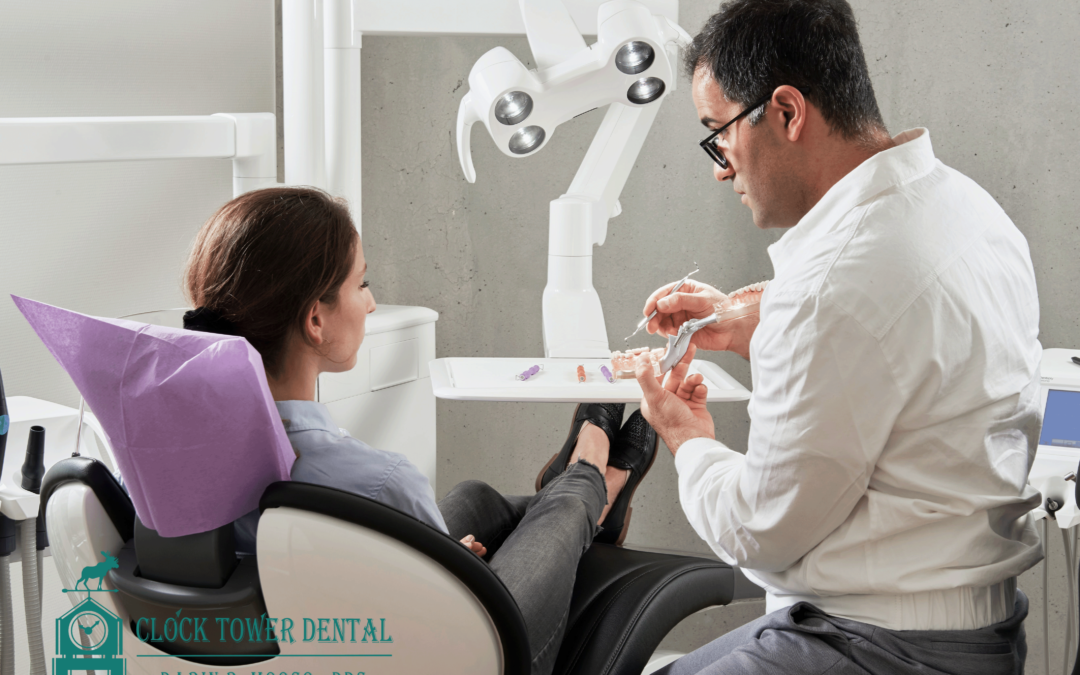A routine dental check-up is important to ensure that there are no issues with your oral health and to detect any concerns as early as possible. The best way to deal with oral health concerns is through preventive care. A routine dental check-up allows you to detect potential issues before they worsen and to receive the proper preventive and restorative care. Routine check-ups help with the prevention of a range of oral health concerns, such as tooth stains, tooth decay, and many more.
Preventing Tooth Decay
Tooth decay is the destruction of a tooth’s structure and can affect both the enamel (the outer coating of the tooth) and the dentin layer of the tooth. It occurs when foods containing carbohydrates, such as breads, cereals, milk, soda, fruits, or candy are left on the teeth. Bacteria that live in the mouth digest these foods, turning them into acids. Plaque is a combination of bacteria, food debris, saliva, and acid, which clings to the teeth. The acids in plaque dissolve the enamel surface of the teeth, creating holes in the teeth called cavities. Dental check-ups can help to detect signs of tooth decay.
- Here are actions you can take to prevent tooth decay:
- Brush your teeth at least twice a day with a fluoride toothpaste.
- Clean between your teeth daily with dental floss.
- Rinse daily with a fluoride-containing mouthwash.
- Eat nutritious and balanced meals and limit snacks. Avoid carbohydrates which can remain on the tooth surface.
- Check with your dentist about using supplemental fluoride, which strengthens your teeth.
- Ask your dentist about dental sealants applied to the chewing surfaces of your molars to protect them from decay.
- Drink water with fluoride. At least a pint of fluoridated water each day is needed to protect teeth from tooth decay.
Preventing Tooth Stain
Coffee, tea, sodas, smoking, and highly pigmented foods can stain teeth. Not that teeth were ever meant to be totally white. The natural color of teeth is actually light yellow to light yellow-red. But as you age, your teeth tend to darken even more. Over time, surface enamel cracks and erodes, exposing dentin, the less dense interior of the tooth, which absorbs food color. Stains also latch onto the plaque and tartar buildup on and between teeth.
The good news is that many common tooth stains, especially stains caused by coffee and smoking, can often be washed away between professional cleanings. Here’s how you can whiten your teeth.
Brushing After Meals
If you clean your teeth regularly and conscientiously, you’ll have less chance of keeping stains on your teeth.
Rinse Often
After every meal, rinse the food from your teeth. If you can’t get to a restroom, pick up your water glass, take a drink, then rinse and swallow at the table.
Use An Electric Toothbrush
Electric toothbrushes will clean teeth better than a manual toothbrush. But when it comes to plaque removal, it depends more on the quality of your brushing than the type of toothbrush you’re using.
Use A Whitening Toothpaste
Dentists used to steer patients away from over-the-counter whitening products because they contained gritty abrasives that could erode the tooth enamel. Manufacturers have gotten better at using peroxide instead of abrasives to give you a slightly brighter result. Because peroxides in toothpastes or polishes stay on the tooth surface only for a brief period of time, they give just a bit of whitening and it doesn’t last very long. Even the lighteners you get at the dentist’s office won’t last forever—there really is no permanent solution. That’s because after you get your teeth nice and white, you’ll probably still be drinking the same things that stained your teeth in the first place.

